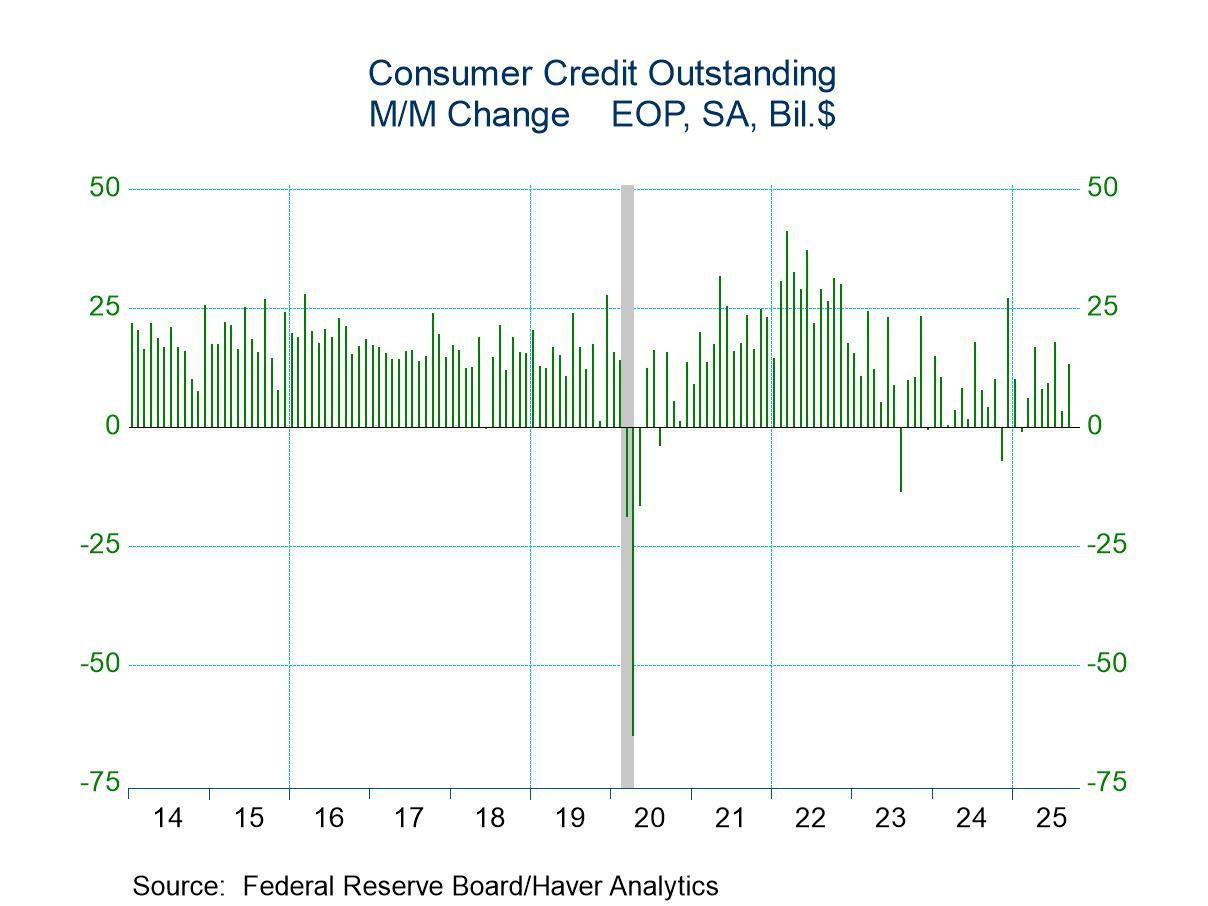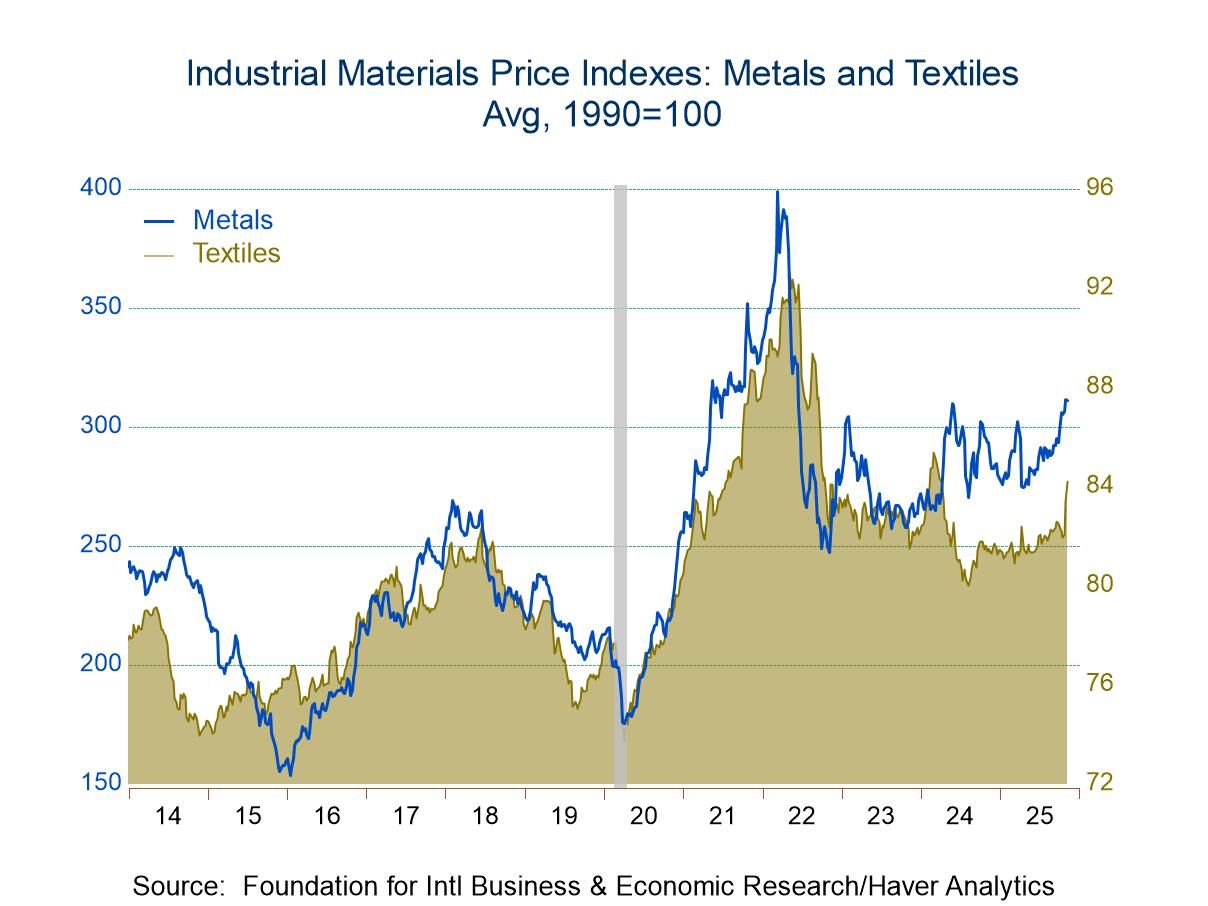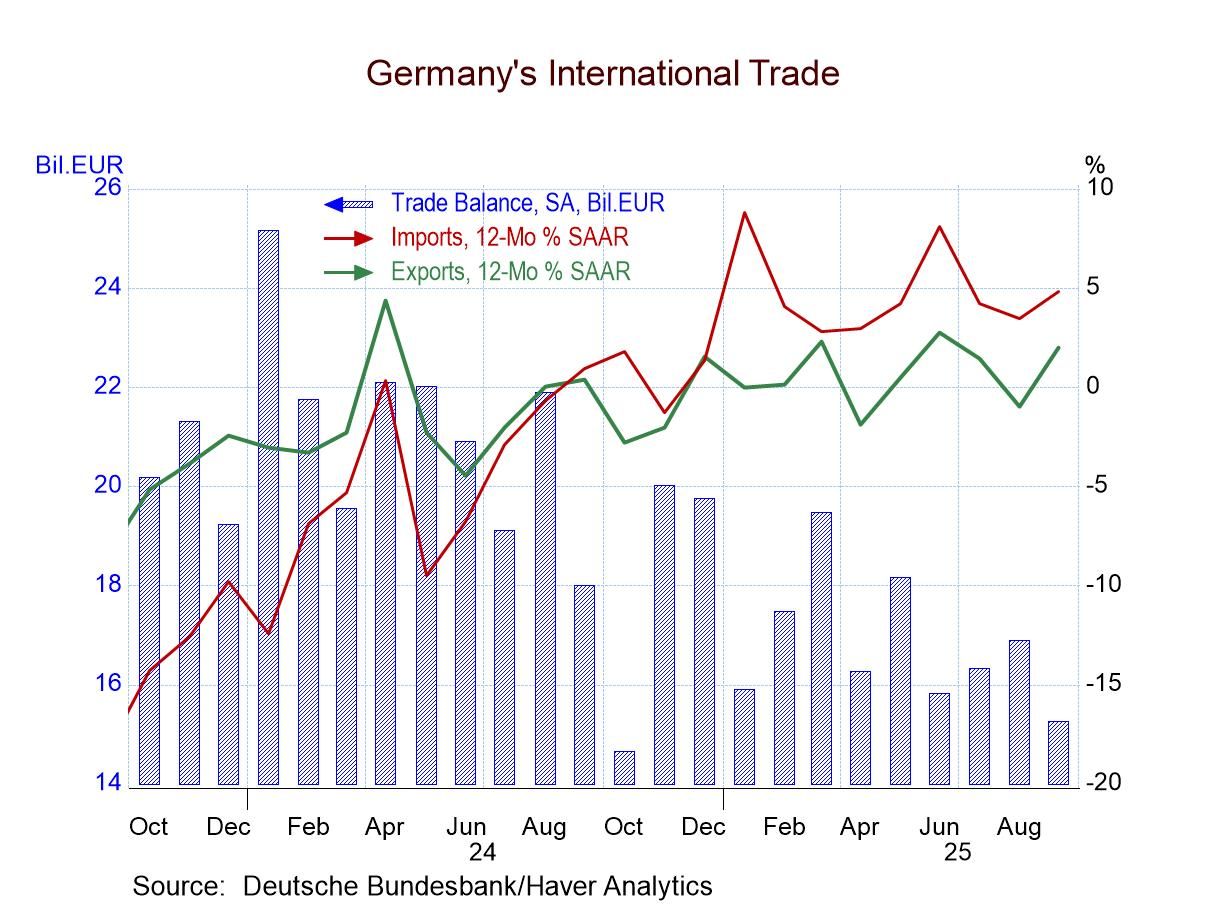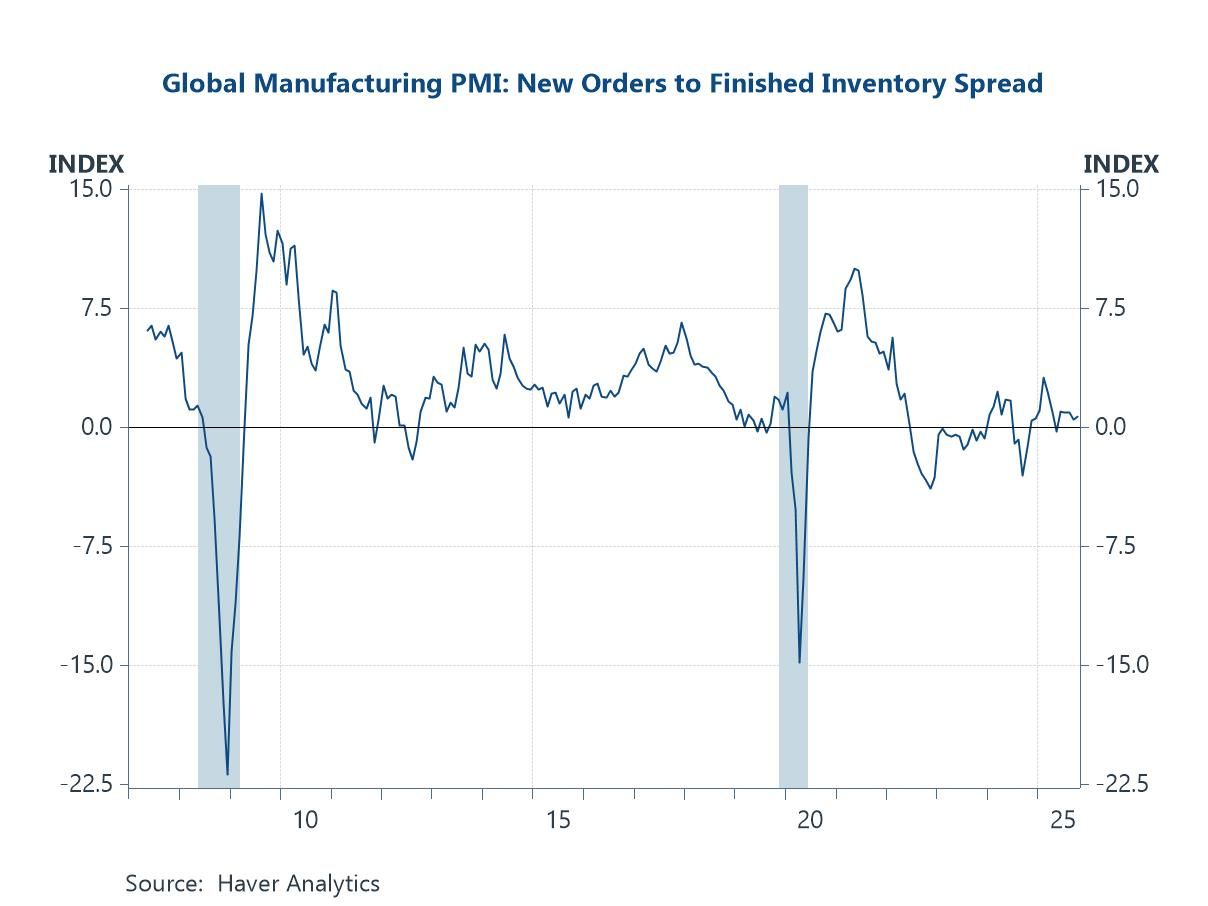 Global| Dec 01 2005
Global| Dec 01 2005Indonesia Trade Balance Largely Steady through October, Even with Big Gains in Oil and Non-oil Exports
Summary
Indonesia's trade data for October, reported this morning, highlight two unexpected aspects of that oil-producing nation's economic development. In October, its monthly trade surplus was $2.6 billion, a large figure, but not the [...]
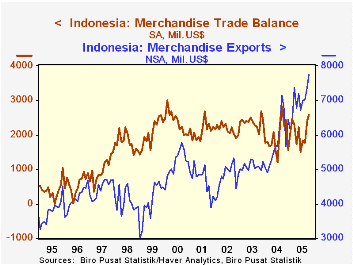
Indonesia's trade data for October, reported this morning, highlight two unexpected aspects of that oil-producing nation's economic development. In October, its monthly trade surplus was $2.6 billion, a large figure, but not the highest ever, and more importantly, only modestly above the $2.3 billion average for 2003, a time when oil and gas prices were considerably lower than they are now. Thus, even as oil and gas exports have risen, so have the country's imports, restraining the widening of the trade surplus. Further, in dollar terms, non-oil exports have risen more than oil-related exports. Total exports were $7.2 billion in October, up 41% from a monthly average of $5.1 billion in 2003. Such large growth in exports emphasizes how remarkable it is that the trade balance has changed so little.
When the first energy crisis hit in the mid-1970s, one concern was over how to "recycle petro-dollars". What would oil-exporting nations do with the large amounts of dollars they were newly receiving? Clearly, this is now a non-issue. The ability of businesses and consumers, at least in Indonesia, to seek out foreign merchandise to import recycles petro-dollars quite effectively. Imports in October were $4.6 billion, up 15% from the year-ago month and 70% from their 2003 average.
Further, oil and gas are hardly the only items Indonesia exports. Over time, Indonesian industry has diversified, so that non-energy products now constitute by far the bulk of its exports. Recently this share has been just above 75% and sometimes in recent years, it has reached 80%. By contrast in the mid-1980s when the data began to include some detail, non-energy exports were only about 25% of total exports. Lately, a look at industrial production data through 2004 suggests that chemicals and fabricated metals have been sources for this growth. Expansion of the chemical sector makes sense in light of the petroleum products already there. Interestingly, the wood and paper products that one might have traditionally thought of for Indonesia are no longer contributors to growth; their industrial production has been declining outright over the past several years.
| Indonesia: Foreign Trade Mil.$, Seas Adj* | Oct 2005 | Sept 2005 | Oct 2004 | Monthly Averages|||
|---|---|---|---|---|---|---|
| 2004 | 2003 | 2002 | ||||
| Trade Balance | 2579.6 | 2407.8 | 2254.1 | 1916.5 | 2375.6 | 2155.8 |
| Exports | 7191.4 | 7226.2 | 6259.1 | 5794.8 | 5088.1 | 4763.2 |
| Oil & Gas | 1820.9 | 1636.4 | 1401.6 | 1294.0 | 1136.9 | 1009.4 |
| Non-Oil & Gas | 5370.5 | 5589.8 | 4857.5 | 4500.8 | 3951.2 | 3753.8 |
| Imports | 4611.8 | 4818.4 | 4005.0 | 3878.3 | 2712.5 | 2607.4 |
Carol Stone, CBE
AuthorMore in Author Profile »Carol Stone, CBE came to Haver Analytics in 2003 following more than 35 years as a financial market economist at major Wall Street financial institutions, most especially Merrill Lynch and Nomura Securities. She had broad experience in analysis and forecasting of flow-of-funds accounts, the federal budget and Federal Reserve operations. At Nomura Securities, among other duties, she developed various indicator forecasting tools and edited a daily global publication produced in London and New York for readers in Tokyo. At Haver Analytics, Carol was a member of the Research Department, aiding database managers with research and documentation efforts, as well as posting commentary on select economic reports. In addition, she conducted Ways-of-the-World, a blog on economic issues for an Episcopal-Church-affiliated website, The Geranium Farm. During her career, Carol served as an officer of the Money Marketeers and the Downtown Economists Club. She had a PhD from NYU's Stern School of Business. She lived in Brooklyn, New York, and had a weekend home on Long Island.


